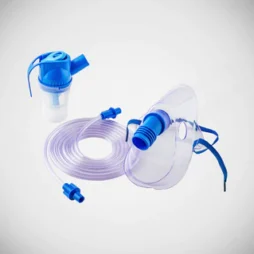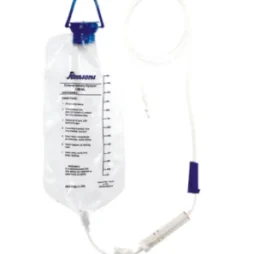Feeding tubes, also known as enteral tubes or feeding catheters, are medical devices used to provide nourishment and deliver liquid nutrition directly into a patient’s gastrointestinal (GI) tract when they are unable to eat or drink normally. These tubes play a vital role in ensuring that individuals receive essential nutrients, fluids, and medications required for their well-being. Here’s a description of feeding tubes:
Description of Feeding Tubes:
Feeding tubes are flexible, sterile tubes made from medical-grade materials such as silicone, polyurethane, or PVC. They come in various sizes and styles, each designed for specific medical purposes and patient needs. Key components of feeding tubes include:
- Tube: The central part of the feeding tube is a slender, hollow tube that is inserted into the patient’s body. The tube can vary in length and diameter, depending on the intended use and the patient’s condition.
- Connectors: Feeding tubes are equipped with connectors that allow for the attachment of various components, including feeding bags, syringes, and extension tubes.
- Distal End: The distal end of the tube is the part that enters the patient’s GI tract. It may have multiple exit ports or a single port, depending on the tube type and its specific application.
- Radiopaque Line: Some feeding tubes have a radiopaque line running alongside the tube. This line is visible on X-rays and helps healthcare providers confirm the tube’s correct placement within the GI tract.
- Securing Device: Feeding tubes may include a securing device such as a balloon or bumper at the internal or external end to hold the tube in place and prevent accidental dislodgment.
Types of Feeding Tubes:
There are several types of feeding tubes, each designed for specific clinical situations and patient needs:
- Nasogastric Tube (NG Tube): Inserted through the nose and down the throat into the stomach, NG tubes are commonly used for short-term nutritional support.
- Nasoenteric Tube (NE Tube): Similar to NG tubes but designed to reach the small intestine, NE tubes are used when gastric feeding is not possible or is contraindicated.
- Gastrostomy Tube (G-Tube): Surgically placed through the abdominal wall directly into the stomach, G-tubes are used for long-term feeding and are suitable for patients who cannot tolerate oral or nasally inserted tubes.
- Jejunostomy Tube (J-Tube): Inserted into the jejunum, the second part of the small intestine, J-tubes are used when feeding into the stomach is not feasible or when gastric feeding is not tolerated.
- Gastrostomy-Jejunostomy Tube (GJ-Tube): Combining elements of both G-tubes and J-tubes, GJ-tubes allow for dual access to the stomach and the jejunum, providing flexibility in feeding options.
How Feeding Tubes Work:
- Insertion: A healthcare provider inserts the feeding tube through a natural or surgically created opening, depending on the type of tube.
- Confirmation: The correct placement of the tube is confirmed using various methods, including X-rays, aspiration of stomach contents, or pH testing.
- Attachment: The feeding tube is attached to a feeding bag, syringe, or other delivery device containing the prescribed enteral nutrition formula.
- Nutrient Delivery: The formula is delivered through the tube directly into the GI tract, providing the patient with essential nutrients, fluids, and medications.
Applications:
Feeding tubes are used in a variety of clinical scenarios, including:
- Nutritional Support: Providing nourishment to patients unable to eat due to conditions such as surgery, trauma, cancer, neurological disorders, or swallowing difficulties.
- Medication Administration: Administering medications, including liquid and crushed medications, directly into the GI tract.
- Hydration: Ensuring adequate hydration by delivering fluids when oral intake is insufficient.
- Long-Term Care: Facilitating long-term nutrition and hydration support in patients with chronic illnesses, disabilities, or conditions that impair their ability to eat.






